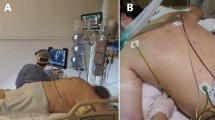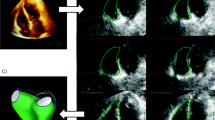Abstract
As the blood flow volume in non-dependent lung composed the primary part of the intrapulmonary shunt during one-lung ventilation (OLV), the shunt fraction (SF) during OLV can be represented by the ratio of blood flow volume in non-dependent lung to the bilateral lung. The purpose of this study is to estimate the shunt in non-dependent lung by transesophageal echocardiography (TEE). Fifteen adult patients requiring OLV for thoracic surgery were enrolled in the study. The upper pulmonary venous flow pattern in bilateral lung and main pulmonary artery flow pattern were acquired respectively by TEE for their velocity time integral (VTI) measurements in following time intervals: before OLV (T0), 30 min after OLV (T30) and 60 min after OLV (T60). Simultaneously the arterial blood was sampled for gas analysis. SF was calculated by VTI of bilateral upper pulmonary veins, and percentage change of blood flow (BFP) was the ratio of upper pulmonary venous VTI between in OLV period and before OLV in non-dependent lung. There was significant decrease in PaO2 and increase in cardiac output after OLV. The pulmonary blood flow in non-dependent lung decreased significantly compared with T0, and SF was 37.1 ± 8.3 and 35.2 ± 7.2 % respectively at T30 and T60. There was significant liner correlation between SF and PaO2 (r = 0.717), and between BFP and PaO2 (r = 0.593). It is feasible to estimate intrapulmonary shunt by TEE in anesthetized patients undergoing OLV. SF measured by TEE has significant correlation with PaO2, and it would expected to be used to predict hypoxemia during OLV.



Similar content being viewed by others
References
Hurford WE, Alfille PH. A quality improvement study of placement and complications of double-lumen endobronchial tubes. J Cardiothorac Vasc Anesth. 1993;7:517.
Goldberg ME, McNulty SE, Azad SS, et al. A comparison of labetalol and nitroprusside for inducing hypotension during major surgery. Anesth Analg. 1990;70(5):537–42.
Brederlau J, Kredel M, Wurmb T, et al. Transesophageal echocardiography for non-cardiac surgery patients: superfluous luxury or essential diagnostic tool? Anesthetist. 2006;55(937–40):933–42.
Slama MA, Novara A, Van de Putte P, et al. Diagnostic and therapeutic implications of transesophageal echocardiography in medical ICU patients with unexplained shock, hypoxemia, or suspected endocarditis. Intensive Care Med. 1996;22:916–22.
Lenz F, Chaoui R. Reference ranges for Doppler assessed pulmonary venous blood flow velocities and pulsatility indices in normal human fetuses. Prenat Diagn. 2002;22:786–91.
Yatsu Y, Tsubo T, Ishihara H, Nakamura H, Hirota K. A new method to estimate regional pulmonary blood flow using transesophageal echocardiography. Anesth Analg. 2008;106:530–4.
Bouhemad B, Barbry T, Soummer A, et al. Doppler study of the effects of inhaled nitric oxide and intravenous almitrine on regional pulmonary blood flows in patients with acute lung injury. Minerva Anestesiol. 2014;80(5):517–25.
Gong Quan, Yang Zhanyun, Wei Wei. Changes of pulmonary blood flow in non-ventilated lung during one lung ventilation. J Clin Monit Comput. 2010;24:407–12.
Shanewise JS, Cheung AT, Aronson S, et al. ASE/SCA guidelines for performing a comprehensive intraoperative multiplane transesophageal echocardiography examination: recommendations of the American Society of Echocardiography Council for Intraoperative Echocardiography and the Society of Cardiovascular Anesthesiologists Task Force for Certification in Perioperative Transesophageal Echocardiography. J Am Soc Echocardiogr. 1999;12:884–900.
Hildick-Smith DJR, Johnson PJ, Wisbey CR, et al. Coronary flow reserve is supranormal in endur-ance athletes: an adenosine transthoracic echocardiographic study. Heart. 2000;84:383–9.
Kim YH, Marom EM, Herndon JE 2nd, McAdams HP. Pulmonary vein diameter, cross-sectional area, and shape: CT analysis. Radiology. 2005;235(1):43–9.
Peyton PJ, Thompson B. Agreement of an inert gas rebreathing device with thermodilution and the direct oxygen Fick method in measurement of pulmonary blood flow. J Clin Monit Comput. 2004;18:373–8.
Dorrington KL, Clar C, Young JD, et al. Time course of the human vascular response to 8 hours of isocapnic hypoxia. Am J Physiol Heart Circ Physiol. 1997;273:H1126.
Beck DH, Doepfmer UR, Sinemus C, et al. Effects of sevoflurane and propofol on pulmonary shunt fraction during one-lung ventilation for thoracic surgery. Br J Anaesth. 2001;86:38–43.
Garutti I, Quintana B, Olmedilla L, et al. Arterial oxygenation during one-lung ventilation: combined versus general anesthesia. Anesth Analg. 1999;88:494–9.
Cohen E, Eisenkraft JB, Thys DM, et al. Oxygenation and hemodynamic changes during one-lung ventilation: effects of CPAP10, PEEP10, and CPAP10/PEEP10. J Cardiothorac Anesth. 1988;2:34–40.
Hambraeus-Jonzon K, Bindslev L, Mellgard AJ, et al. Hypoxic pulmonary vasoconstriction in human lungs. A stimulus-response study. Anesthesiology. 1997;86:308–15.
Acknowledgments
The authors thank Hailong Dong, Professor in Department of Anesthesiology of Xijing Hospital, for the assistance on essay writing. This study was supported by No. 2012JY0089 from Science and Technology Projects (Sichuan, China).
Conflict of interest
The authors declare that they have no conflict of interest.
Author information
Authors and Affiliations
Corresponding author
Additional information
Miao Wang and Quan Gong have contributed equally to this work.
Trial registry name: The Change of Pulmonary Blood Flow during One Lung Ventilation.
Registration identification number: NCT00826956.
Rights and permissions
About this article
Cite this article
Wang, M., Gong, Q. & Wei, W. Estimation of shunt fraction by transesophageal echocardiography during one-lung ventilation. J Clin Monit Comput 29, 307–311 (2015). https://doi.org/10.1007/s10877-014-9606-2
Published:
Issue Date:
DOI: https://doi.org/10.1007/s10877-014-9606-2




